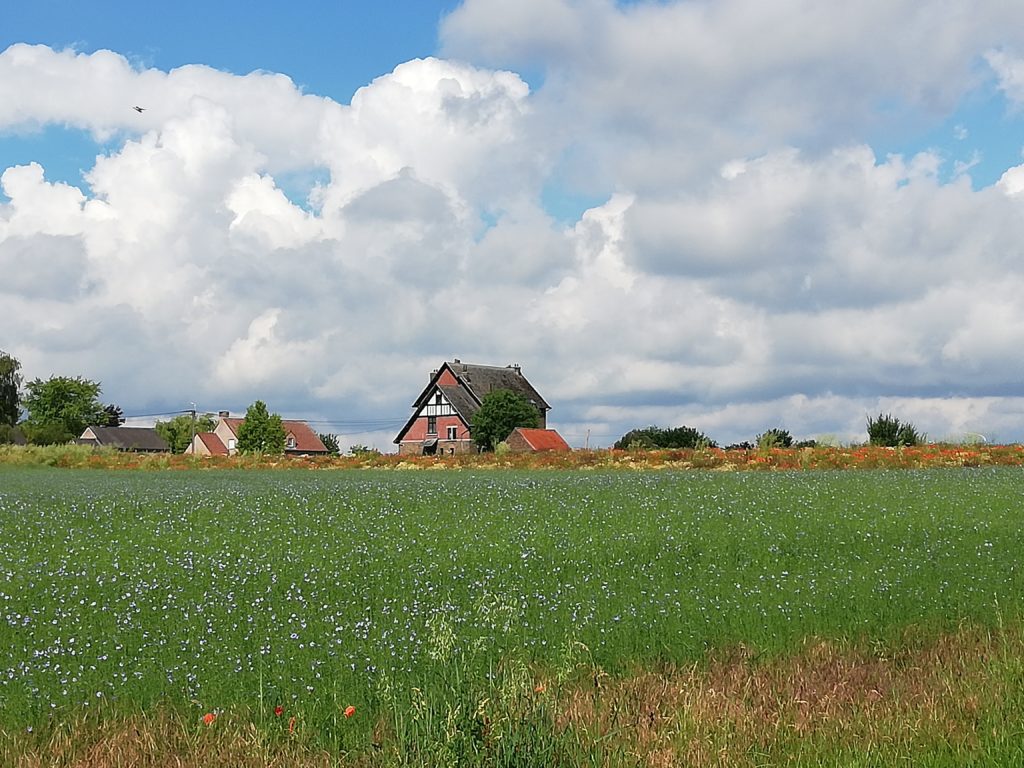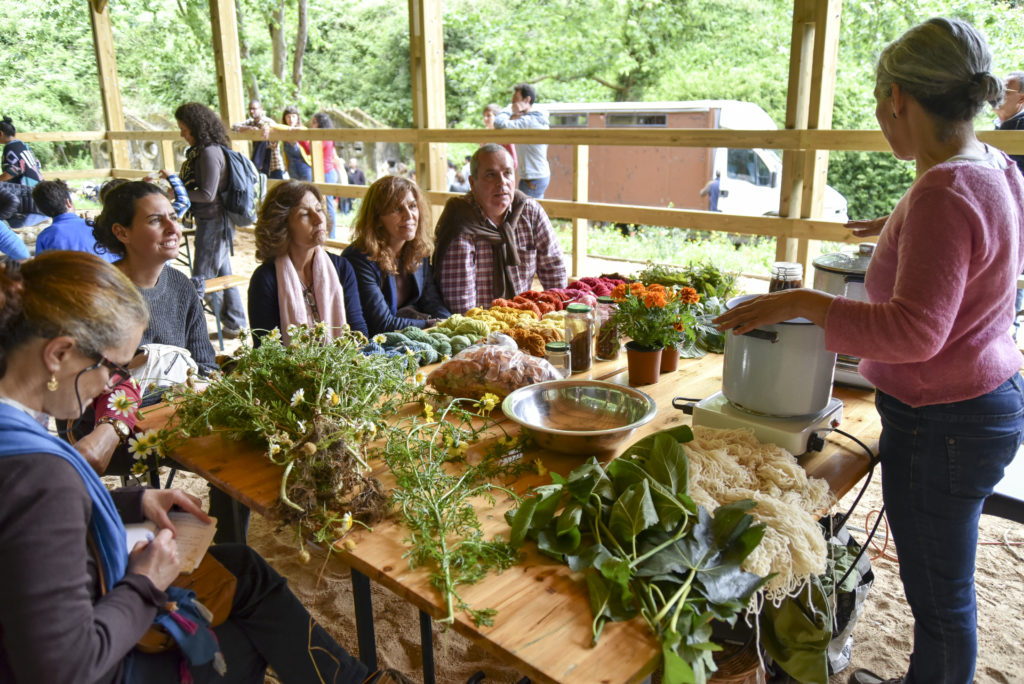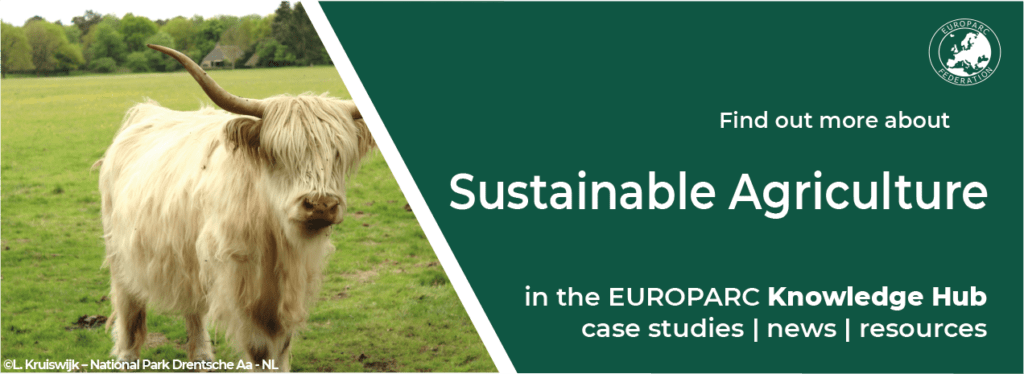EUROPARC’s recommendations for the CAP National Strategic Plans
There should be an active Role for Protected Areas and Natura 2000 sites, in the National Strategic Plans of the European Common Agricultural Policy.
2021 saw the end of the long process to adopt the new European Common Agricultural Policy.
In our Policy Paper “Protected Areas as laboratories for Sustainable Agriculture. The role of Protected Areas in implementing the EU Green Deal & EU Agricultural Policies – 2021”, we have underline how rural Protected Areas are crucial for the establishment of new and real eco-friendly agriculture.
Therefore, the EUROPARC Federation, with the support of the EUROPARC Commission for Sustainable Agriculture and Protected Areas, has elaborated some specific recommendations, in order to value the strategic contributions that Natura 2000 sites and Protected Areas offer in reaching the CAP green ambitions and to ensure the specific needs of Protected Areas and local farmers in linking sustainable agriculture and biodiversity protection are effectively considered.
With these recommendations, EUROPARC seeks to:
- Encourage National and Regional authorities to take into account the role of the Protected Areas and Natura 2000 sites in the elaboration of the National Strategic Plans and as key contributors to the green ambitions of the new Common Agricultural Policy.
- Request the European Commission to consider, in the evaluation and approval of National Strategic Plans, if Protected Areas have been adequately included in the plans.

Bourdinal Mehaigne Nat Park (BE) by S.Petrosillo
EUROPARC’s recommendations
1. Management Authorities in charge of Protected Areas and Natura 2000 Sites must be actively included as key stakeholders in the preparation, monitoring and evaluation of National Strategic Plans. Protected Areas and Natura 2000 Sites in rural areas have specific expertise and are laboratories of sustainability. Protected Areas can be key actors in supporting farmers to achieve green targets, encouraging the implementation of eco-schemes and agri-environmental measures.
2. Farmers in Protected Areas and Natura 2000 sites should receive special and specific attention in the National Strategic Plans. Farming in and nearby Protected Areas involves working with stakeholders with diverse priorities, approaches and needs. The new Common Agricultural Policy should recognise these needs and incentivise and reward farmers who are working in or close to Protected Areas and Natura 2000 Sites, engaged in environment-friendly agriculture in partnership with the Protected Areas’ authorities.
3. Partnerships between farmers and Protected Areas and Natura 2000 managers must be promoted and supported by the National Strategic Plans with concrete actions and funds. Farmers and Protected Areas managers can and must be allies, because only by working together in active and positive collaboration, can we reach a more sustainable agriculture, good for nature and good for farmers. This is only possible if based on trust and long-term collaborations: effective dialogue and positive partnerships between Protected Areas and farmers is a necessity and must be adequately resourced.
4. The National Strategic Plans must be consistent with the Natura 2000 Directives and the EU Biodiversity Strategy. Alongside the work of Protected Areas, in particular, the National Strategic Plans should: enhance and improve the management of permanent meadows and pastoral areas; preserve wetlands through incentive and collective measures; develop and maintain agro-ecological infrastructures; better integrate cultural aspects and functional biodiversity.
5. The National Strategic Plans must ensure that no perverse subsidies, driving unsustainable intensification leading to habitat loss or pollution inside or alongside Protected Areas, would be permitted.
6. The National Strategic Plans must support capacity building to improve practical skills for sustainable and eco-friendly farming: actions and training should be directed both to farmers and to Protected Areas’ Management Authorities. The National Strategic Plans should assure that the Farm Advisory Systems operating in and nearby Protected Areas and Natura 2000 sites are able to offer the appropriate understanding and knowledge necessary in these specific contexts.
7. The National Strategic Plans, in coherence with the EU Farm to Fork Strategy, have to support the promotion of sustainable, healthy food products coming from Protected Areas and Natura 2000 sites: awareness campaigns and public events, gathering Protected Area managers and farmers, should promote their commitment and community engagement. Protected Areas have long-standing experience in working with farmers to achieve fair, healthy and environmentally-friendly food systems. They also stimulate hospitality and food service practices in collaboration with the local tourism sector. For this reason, Protected Areas and farmers together can also contribute to influence consumers’ behaviours and to strengthen positive relations between farmers and consumers.
8. The National Strategic Plans must safeguard and promote cultural diversity in Protected Areas, where agricultural activities and traditions are actively supported in respect for landscape management: this is essential to safeguard territorial identity, avoid homogenization and avoid the loss of knowledge, most of all from collective memory. With their natural and cultural heritage and with their holistic approach in protecting this cultural richness, Protected Areas have the vast experience needed to combat negative and unsustainable transformation of rural landscapes and land abandonment.
9. The National Strategic Plans must recognise the possibilities of and interest in experimenting with innovative, enhanced sustainable technical engineering eco-regimes, which encourage real changes in practices, better targeting of direct aid and a second pillar that supports agricultural and food transition. Protected Areas represent ideal laboratories where traditional methods are recuperated and innovation is nurtured, whilst working to balance the interests of different local actors.
10. At local level, the Strategic Plans should foster the capacities of Protected Areas and Natura 2000 management bodies to plan, develop, manage local voluntary agreements that go beyond statutory requirements and are based on specific ‘on- the-ground’ nature, land, and biodiversity conservation challenges. “Results based schemes” should be an alternative to can be combined with more traditional “prescription-based” measures. Together with farmers, a monitoring scheme with clear indicators should be established to control and evaluate progress in each Protected Area and Natura 2000 site.

Cascais Ambiente (PT)
